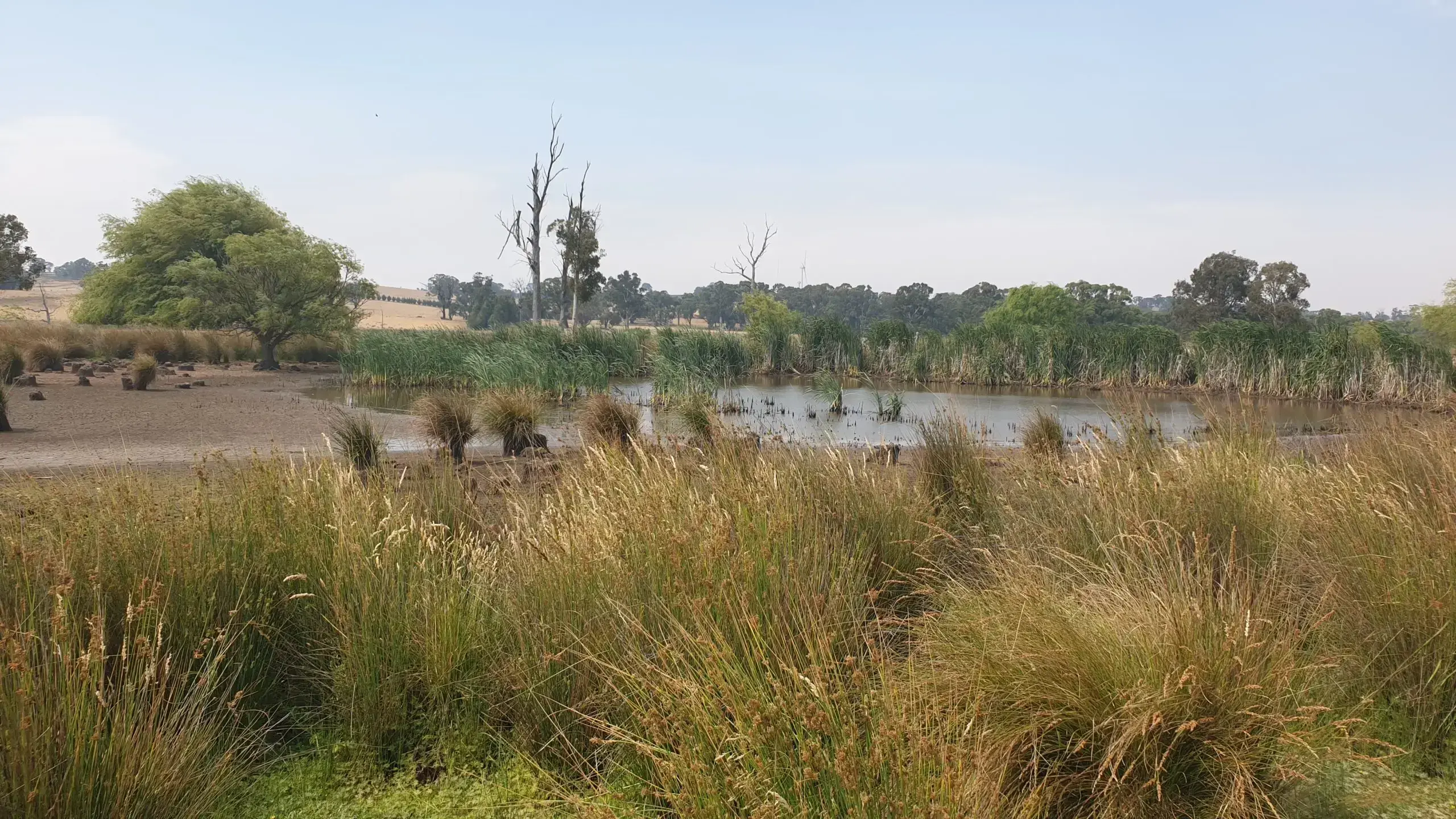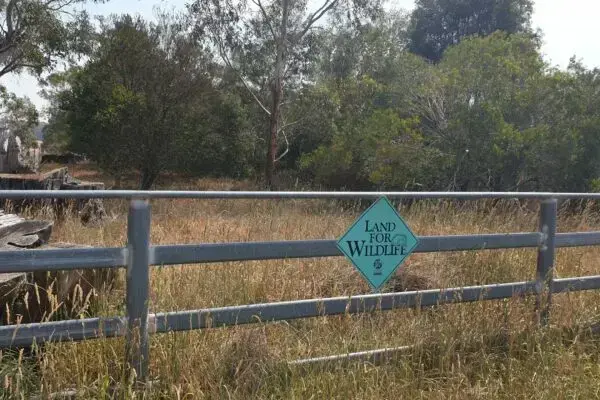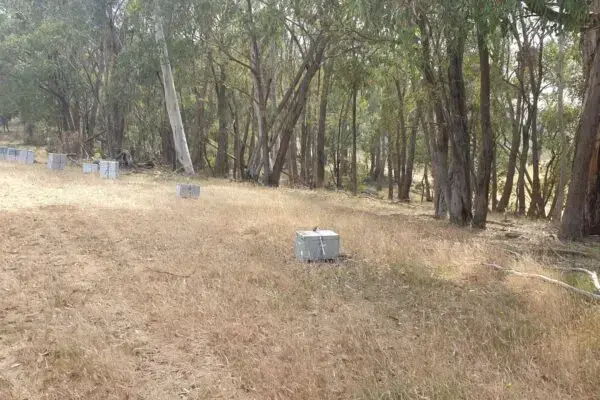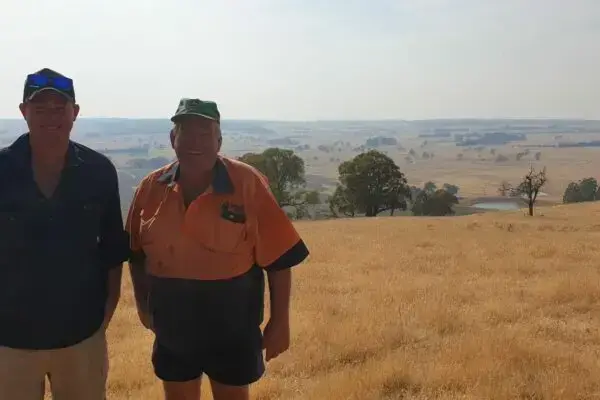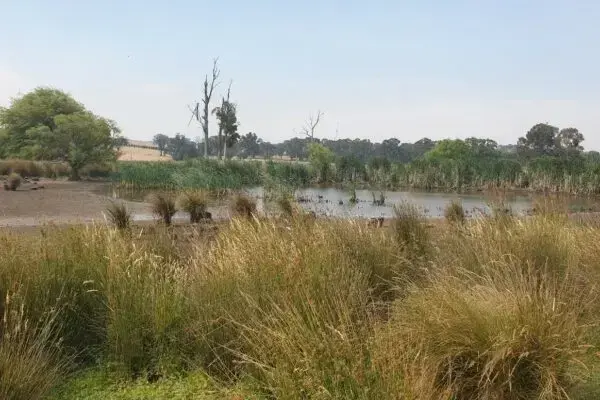‘Garry Kadwell’s Fairhalt’
A REGENERATIVE AGRICULTURE CASE STUDY FROM CROOKWELL, NSW
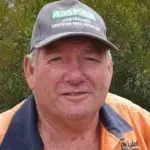 Garry Kadwell has been managing Rosedale and neighbouring property Fairhalt since the 1970s. His family acquired the first parcels of the properties in 1901. The properties are located on the Great Dividing Range south of Crookwell, New South Wales. Up until 1980 the main enterprise of the Kadwell family was an apple orchard. Under Garry’s management the enterprise of the property has changed to producing seed stock potatoes and fat lambs.
Garry Kadwell has been managing Rosedale and neighbouring property Fairhalt since the 1970s. His family acquired the first parcels of the properties in 1901. The properties are located on the Great Dividing Range south of Crookwell, New South Wales. Up until 1980 the main enterprise of the Kadwell family was an apple orchard. Under Garry’s management the enterprise of the property has changed to producing seed stock potatoes and fat lambs.
Over the years Garry has worked tirelessly protecting remnant stands of vegetation as well as planting habitat corridors to connect stands of vegetation across the properties. Currently 32% of Fairhalt is protected for conservation. Garry has also created numerous wetlands across the property providing vital habitat for birds and other fauna, such as the platypus (Ornithorhynchus anatinus).
Fairhalt, Crookwell, NSW
FARM FACTS
ENTERPRISE: Seed stock potatoes and fat lambs
PROPERTY SIZE: 730 acres
AVERAGE ANNUAL RAINFALL: 813 mm
ELEVATION: 1000m
MOTIVATION FOR CHANGE: An awareness about the environmental health of the property and its values was instilled in Garry during his youth by his father and grandfather, this helped shape the management strategies and regimes that Garry has implemented.
INNOVATIONS
Regenerative landscape and livestock management regimes, including:
- Increased time between potato crop rotations to allow soil health to repair.
- Lucerne and grass species cropping post-potato crop to improve soil health. Compost and lime applications to provide soil nutrients and fix pH levels.
- Utilisation of a “one pass” tilling machine to reduce tilling impact on soil.
- Habitat corridors planted across the property to link stands of remnant vegetation.
- Set aside 32% of the property for conservation purposes.
- Constructed wetlands on the property to provide habitat for birds and other fauna.
- Rotationally grazing fat lambs to maintain ground cover.
KEY RESULTS
- Significant increases in production, now one of the largest potato producers in the region. High levels of organic matter and carbon are stored within the soil profile. Conservation works have provided critical habitat for endangered species of flora and fauna.
Farm Gallery
Farm gallery
Garry’s first recollection is of planting trees with his grandfather. In the early 1970s, they planted Yellow Box together, and the elder Kadwell said, ‘Garry, when you look at these trees you will remember me, and we will have made a difference.’
See the difference this attitude has made in our photo essay of Fairhalt.
The Ecological Assessment
Ecological Assessment
The conservation work Garry Kadwell conducted has provided significant natural capital benefits to Fairhalt. Threatened and vulnerable species of flora and fauna are thriving within the bounds of Fairhalt.
The Economic Report
Economic Report
Throughout our analysis, we noted that the regenerative practices Garry has implemented on Fairhalt have led to significantly increased production levels when compared to the Average Farm. With increased productivity, the income generated on Fairhalt is also significantly higher than that of the average Farm. In addition, the increased productivity has allowed Garry to deploy a more diversified production mix – leading to a more sustainable enterprise as a whole.
Gary in his own words
The Fairhalt Story
Garry Kadwell’s family have managed Fairhalt for over 100 years. Garry’s early ancestors conserved remnant stands of vegetation from land clearing across the property. Some of Garry’s earliest memories are of planting trees with his grandfather and being instructed of their value in the landscape. Garry has continued on planting trees and other vegetation throughout Fairhalt. Currently 32% of Fairhalt is protected for conservation purposes.
Garry has significantly increased production levels on the property in the form of seed stock potatoes and fat lambs. The increases in production levels have coincided with improvements to soil health and ecosystem health of the entire property. Garry has achieved this through careful management and understanding of the many layers of the system that comprise Fairhalt.
Background
Growing up on the family property Garry Kadwell realised he did not want to be an orchardist. One of the first management decisions he made after taking control of the family property was to trial a crop of potatoes to assess their viability. The potato trial was a success and Garry quickly adopted potato production as the main enterprise on his property. In the early years of producing potatoes, Garry used synthetic fertilisers to ensure crops were produced each year. His management practices were gradually degrading soil biology. Garry realised this quite early on and started focussing on improving the health of his soil to create a more productive environment.
One of Garry’s earliest memories is of planting eucalyptus trees on the property with his grandfather. His grandfather advised him that he wouldn’t see the benefit of the tree plantings, but Garry would. This is a message that has stuck with Garry his entire life. He has farmed with an attitude of conservation and improvement, aiming to leave the natural state of his property in better shape than before. Garry has also demonstrated vision, the ability to take risks and find innovative solutions to problems.
The first parcel of land Garry purchased as a young man was viewed as an unproductive, run-down block with limited potential. He viewed it as a perfect opportunity to regenerate a parcel of land. In a few short years Garry had turned the block into a highly productive working landscape with areas of revegetation plantings and native forest set aside for conservation purposes.
Over the years, Garry has adopted techniques to improve soil health and productivity. These include, applying lime to optimise soil pH levels for producing potatoes, applying compost annually, rotations of lucerne and ryegrass after a rotation of potatoes to repair and improve soil health and adopting “one pass” tilling methods to reduce soil disturbance from planting.
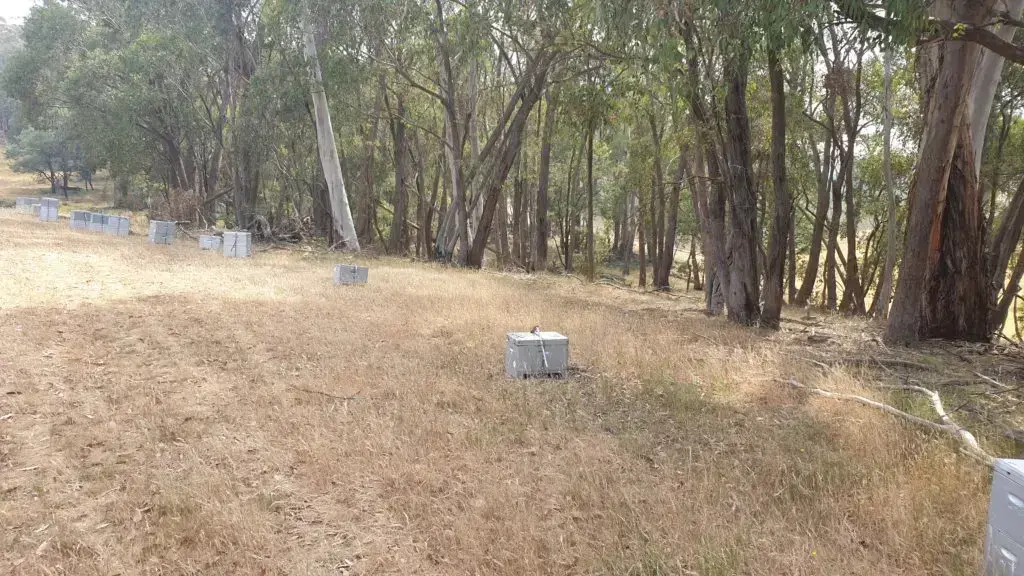
Habitat corridor planted by the Kadwell’s and an apiarist’s beehives.
Garry’s property is a testament to his family’s vision and courage. Conducting tree plantings during the 1970s and conserving remnant stands of forest is a rarity among farm managers from that era. The words of Garry Kadwell’s grandfather ring true to this day, anyone who visits Fairhalt can pay testament to this statement and see the benefits of tree planting.
The Landscape
The Kadwell’s properties are located just south of Crookwell, New South Wales. They own two properties, Rosedale and Fairhalt, and lease a third parcel of land close by; a total of 690 hectares. The largest parcel of land by size is Fairhalt. For the purpose of providing an accurate description of the Kadwell’s land management practices, the reports will focus on Fairhalt. Fairhalt is located on top of the Great Dividing Range. Its highest point sits at 1000m above sea level and its average annual rainfall is 813mm.
The four main soil types and their total carbon content found on Fairhalt consist of:
- red basalt (5.02% Total Carbon) on the undulating slopes
- grey loam (2.47% Total Carbon) on the flats
- quartz (3.18% Total Carbon) on the hill tops
- some sedimentary soils (1.42% Total Carbon) in the gullies and watercourses.
The red basalt and grey loam country are considered to be the most productive land on the property and cropping is conducted exclusively in these soil types.
Vegetation on the property is a mix of remnant forest and conservation plantings conducted by the Kadwell family. The remnant forest is dominated by an overstorey of eucalyptus species such as mountain gum (Eucalyptus dalrympleana), broad-leaved peppermint (Eucalyptus dives), ribbon gum (Eucalyptus viminalis) and exceptionally large specimens of snow gum (Eucalyptus pauciflora). Black gum (Eucalyptus aggregata), which is listed as vulnerable inNSW, is also found on Fairhalt.Mid and understorey species found within the remnant include acacias, bracken, numerous native grasses and native orchids. The remnant forest areas on the property are all fenced and protected from livestock grazing.
Conservation plantings conducted by Garry Kadwell consist of habitat corridors to provide linkages through the landscape. As well as patterns of plantings along the roadside to create a view that the entirety of the property is vegetated. Garry continues to conduct revegetation work across the property when time and resources allow. Greening Australia has helped him select and obtain the correct species of flora to plant in the new revegetation works as well as providing volunteers to aid in planting.
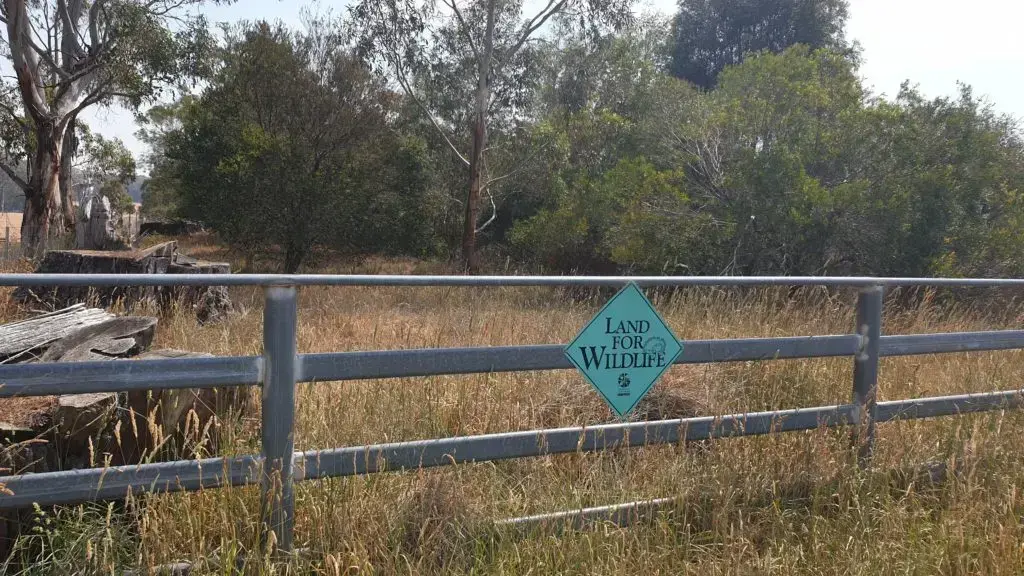
A conservation planting conducted in support of Land For Wildlife.
Since the 1980s Garry has created a number of wetlands on his property. Garry has trained in conservation earthworks and is adept at reading the flow of the landscape to create functioning wetlands. The wetlands act as a filter to clean and purify water flowing through the landscape and the water stored within the wetlands is utilised for irrigating crops. The wetlands provide vital habitat for all matter of fauna, livestock are also excluded from entering the wetland areas.
Surveys of flora and fauna species on the property have been conducted by the Crookwell Flora and Fauna Club in conjunction with Dr McComas Taylor of the ANU. In a survey of birds visiting the wetlands on Fairhalt, 50 species were recorded. Five species of birds that are listed as vulnerable or threatened within NSW were observed. These were:
- Powerful Owl (Ninox strenua)
- White-fronted Chat (Epthianura albifrons)
- Varied Sittella (Daphoenositta chrysoptera),
- White-bellied Sea-Eagle (Haliaeetus leucogaster) and
- Scarlet Robin (Petroica boodang).
Garry’s revegetation and conservation work combined with the wetlands he has created have provided a healthy habitat for many different species.
Production
The main enterprise on Fairhalt is producing seed stock potatoes. Other enterprises include fat lamb production, gourmet potatoes and occasionally lucerne/silage fodder production. Garry applies a minimum 5-year cycle management regime to each parcel of land on the property. Potatoes are not planted more often than one year out of every five. Typically, in the other four years Garry conducts a crop rotation of lucerne for a few years, then pasture grasses for the remaining year. The lucerne, having a deep root system, helps repair the damage done to soil structure by the potato crop. It also returns some nitrogen to the soil. He extends the five year cycle up to 15 years in certain circumstances. That is, a potato crop once every 15 years. Garry has adopted this management regime to ensure his soils are given adequate rest periods after each potato crop. This allows soil structure to repair and avoids nutrient depletion.
Garry has recently purchased a “one pass” tilling implement. Reducing the amount of tillage his soil is subjected to reduces the damage to soil structure and fungal life.
Garry also applies a yearly dosage of 10 cubic metres of compost per hectare. Lime is also applied to regulate pH levels to ensure they stay between 5.0-5.8 (5 tonnes per hectare every 10 years). That practice was started in the early 1970s to provide the optimal pH for producing potatoes.
The seed potatoes Garry produces are sold to major growers throughout Australia. Garry ensures that the potatoes are free from disease by replanting and harvesting each individual potato a number of times over the course of a few years and removing the potatoes which show signs of disease. This ensures that only potatoes which are free from disease reach the market. This also multiplies the number of potatoes Garry can produce without having to purchase more seed stock.
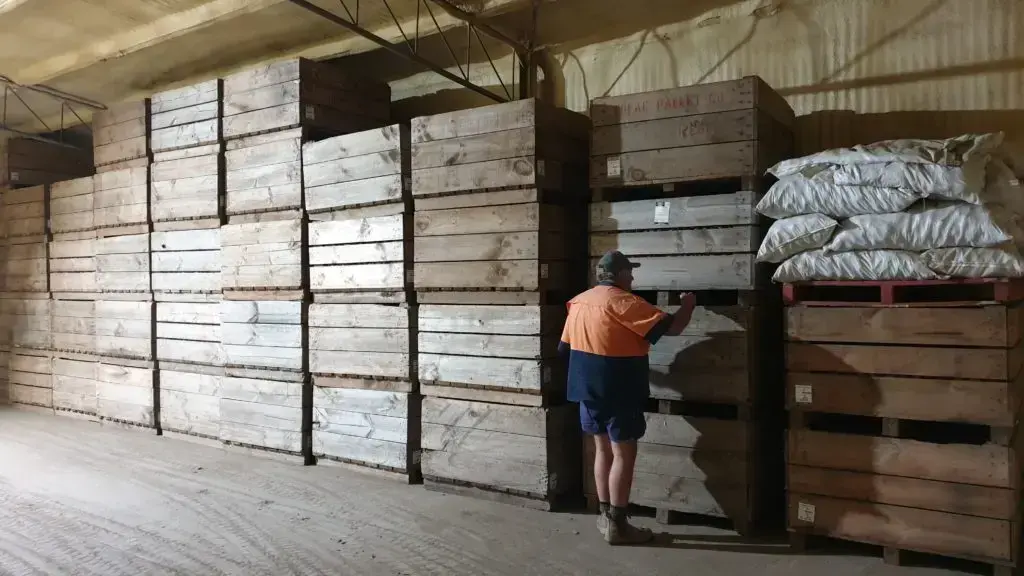
Harvested potatoes are stored in a refrigerated warehouse.
The gourmet potatoes Garry produces are a special variety known for their ability to resist absorbing oil during cooking, which results in a lower fat content. The gourmet potatoes are sold to high end restaurants in Sydney and Canberra at a premium price.
Garry runs around 1800 lambs on the property, the lambs are grazed on lucerne and mixed grass species paddocks. Garry has the ability to cut and bail fodder to be stored and fed out to the lambs when required.
Community Engagement
Garry Kadwell has been an active member of the Crookwell community for many years. He has served in the local Rural Fire Service Brigade, assisted the local public school in gaining equipment and volunteered with the local aged care facility.
During the millennium drought Garry recognised that the community was doing it tough and many people were facing mental health issues. He organised an event called “Looking after your mate” which was aimed at bringing the community together and giving people a space to share what was happening in their lives. The event was a huge success with many organisations supporting it and large numbers of the community attending. Some of the feedback received after the event highlighted that the event had changed lives.
Conclusion
Garry Kadwell has achieved significant results in improving the health of his soil and landscape as well as improving production results.Garry has managed to extend the minimum five-year rotation between potato crops out to 15 years, whilst maintaining profitability. This has resulted in significant environmental benefits to the property by reducing crop stress. Yearly applications of compost have seen the carbon levels within Garry’s soils rise up to 5%. Currently 32% of Fairhalt is protected for conservation purposes. The conservation land provides critical habitat for numerous native species of birds and mammals. Garry has developed a business model which is financially viable and employs a number of locals whilst protecting and conserving the land. This is a considerable achievement. Garry’s innovative approach to farming has led to him running one of the most successful potato production businesses in the Crookwell region.



